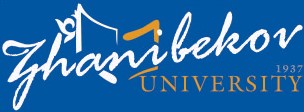The Use of the Stepik Platform for Organizing Blended Learning for Future Mathematics Teachers
The use of the stepik platform for organizing blended learning for future mathematics teachers
DOI:
https://doi.org/10.47751/skpu.1937.v43i1.3Keywords:
Stepik platform , future mathematics teachers , online course , blended learning, massive open online course (MOOC)Abstract
The article examines the use of the Stepik online platform for organizing blended learning in mathematical disciplines at pedagogical universities. Blended learning, combining traditional and modern methods, simplifies the learning process and becomes an effective way to reorganize the educational system. The relevance of the research topic is driven by the lack of online courses in professional disciplines for future mathematics teachers, as well as issues related to the selection and use of online platforms for organizing blended learning. The aim of the article is to explore the potential of the Stepik platform for creating online courses for future mathematics teachers and to demonstrate ways to effectively use it in organizing blended learning. The methodological basis of the research consists of systematic and constructive approaches. Methods of analysis and synthesis of theoretical material, as well as blended learning models and online course creation technologies, were used during the study. The article provides a comprehensive overview of the capabilities of the Stepik platform, revealing its potential for educators in creating interactive courses, theoretical materials, video lectures, and various practical assignments. Special attention is given to the platform’s contribution to effectively organizing students' independent work, improving the systematization of knowledge, and enhancing control. Stepik’s effectiveness is evident in its ability to organize blended learning, combining traditional face-to-face lessons with online learning elements, making the learning process more flexible and productive. As a result of the study, examples of a course on "Algebra and Number Theory," developed on the Stepik platform for future mathematics teachers, are presented, and the stages of using the "flipped classroom" model in organizing blended learning are described. The article suggests key methods for effectively using Stepik courses in organizing blended learning for future mathematics teachers.








